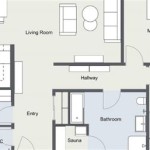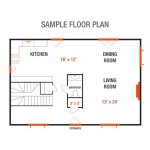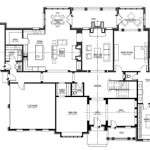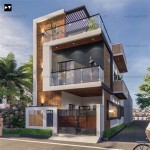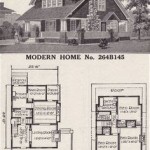House plans with five bedrooms offer ample living space for families, multi-generational households, or those who desire extra room for guests or home offices. These plans typically feature a master suite on the main floor or upper level, along with four additional bedrooms and an optional bonus room or loft.
Whether you’re a growing family, work from home, or simply enjoy having extra space, house plans with five bedrooms can provide a comfortable and functional living environment that meets the needs of modern families.
In the following sections, we’ll explore various five-bedroom house plans in greater detail, discussing their key features, benefits, and how to choose the right plan for your needs.
When selecting a house plan with five bedrooms, there are several important considerations to keep in mind:
- Master suite location (main floor or upper level)
- Number and size of additional bedrooms
- Presence of a bonus room or loft
- Overall square footage and layout
- Style and architectural features
- Garage size and configuration
- Outdoor living spaces (patios, decks, porches)
- Energy efficiency and sustainability
- Cost of construction
- Future expansion potential
By carefully considering these factors, you can choose a house plan with five bedrooms that meets your specific needs and preferences.
Master suite location (main floor or upper level)
The location of the master suite in a five-bedroom house plan is an important consideration that can impact privacy, convenience, and accessibility.
- Main floor master suite
A master suite on the main floor offers easy access to common areas, the kitchen, and outdoor living spaces. This layout can be particularly beneficial for families with young children or elderly family members who may have difficulty navigating stairs. Additionally, a main floor master suite can provide a sense of privacy and separation from the other bedrooms in the house.
- Upper level master suite
An upper level master suite offers more privacy and seclusion from the rest of the house. This layout can be ideal for couples who desire a quiet and peaceful retreat. Additionally, an upper level master suite often provides better views and natural light than a main floor master suite.
Ultimately, the best location for the master suite will depend on your individual needs and preferences. If you prioritize convenience and accessibility, a main floor master suite may be the better choice. If you value privacy and seclusion, an upper level master suite may be more suitable.
Number and size of additional bedrooms
The number and size of additional bedrooms in a five-bedroom house plan is an important consideration that can impact the overall functionality and comfort of the home.
- Number of additional bedrooms
The number of additional bedrooms will depend on the size of your family and your future needs. If you have a large family or frequently host guests, you may want to consider a house plan with four or even five additional bedrooms. If you have a smaller family or do not anticipate needing as many bedrooms, a house plan with three additional bedrooms may be sufficient.
- Size of additional bedrooms
The size of the additional bedrooms will vary depending on the overall size of the house and the specific layout of the plan. However, it is important to make sure that the additional bedrooms are large enough to accommodate a bed, dresser, and other essential furniture. You may also want to consider the future needs of your family when determining the size of the additional bedrooms. For example, if you have children who will eventually need their own desks or study spaces, you may want to choose a house plan with additional bedrooms that are large enough to accommodate these needs.
Ultimately, the number and size of additional bedrooms that is right for you will depend on your individual needs and preferences. By carefully considering your current and future needs, you can choose a house plan with five bedrooms that provides the perfect amount of space and functionality for your family.
Presence of a bonus room or loft
The presence of a bonus room or loft in a five-bedroom house plan can provide additional living space and flexibility.
- Bonus room
A bonus room is a finished room that is typically located on the upper level of a house. It can be used for a variety of purposes, such as a family room, playroom, home office, or guest room. Bonus rooms often have vaulted ceilings and large windows, which can make them feel more spacious and inviting.
- Loft
A loft is a finished room that is located in the attic of a house. It is typically accessed by a staircase or ladder. Lofts can be used for a variety of purposes, such as a bedroom, home office, or storage space. Lofts often have sloping ceilings and exposed beams, which can give them a unique and charming character.
- Benefits of a bonus room or loft
There are many benefits to having a bonus room or loft in a five-bedroom house plan. These benefits include:
- Additional living space
- Flexibility in use
- Increased home value
- Considerations when choosing a bonus room or loft
There are a few things to consider when choosing a bonus room or loft in a five-bedroom house plan. These considerations include:
- Size and layout
- Location
- Access
Ultimately, the decision of whether or not to include a bonus room or loft in your five-bedroom house plan is a personal one. However, if you are looking for additional living space and flexibility, a bonus room or loft can be a great option.
Overall square footage and layout
The overall square footage and layout of a five-bedroom house plan are important considerations that can impact the functionality, comfort, and value of the home. The square footage of a house plan refers to the total living area of the home, which includes all finished spaces such as bedrooms, bathrooms, kitchens, living rooms, and dining rooms. The layout of a house plan refers to the arrangement of these spaces and how they flow together.
When choosing a five-bedroom house plan, it is important to consider your family’s needs and lifestyle. If you have a large family or frequently entertain guests, you may want to choose a house plan with a larger square footage. If you have a smaller family or do not need as much space, a house plan with a smaller square footage may be more suitable. It is also important to consider the layout of the house plan and how the spaces flow together. You want to choose a layout that is functional and meets the needs of your family.
There are many different types of layouts available for five-bedroom house plans. Some popular layouts include:
- Single-story layouts: Single-story layouts are all on one level, which can be ideal for families with young children or elderly family members who may have difficulty navigating stairs.
- Two-story layouts: Two-story layouts have two levels, with the bedrooms typically located on the upper level and the living areas on the main level. This type of layout can provide more privacy for the bedrooms and can also create a more spacious feel in the living areas.
- Split-level layouts: Split-level layouts are a combination of single-story and two-story layouts. These layouts typically have a half-level between the main level and the upper level, which can create a more open and spacious feel.
Ultimately, the best way to choose the right overall square footage and layout for your five-bedroom house plan is to work with a qualified architect or builder. They can help you design a house plan that meets your specific needs and preferences.
In addition to the overall square footage and layout, there are a number of other important factors to consider when choosing a five-bedroom house plan. These factors include the number and size of bedrooms, the presence of a bonus room or loft, the style and architectural features of the home, the garage size and configuration, the outdoor living spaces, the energy efficiency and sustainability of the home, the cost of construction, and the future expansion potential of the home.
Style and architectural features
The style and architectural features of a five-bedroom house plan can have a significant impact on the overall look and feel of the home. There are many different styles and architectural features to choose from, so it is important to select a style that suits your personal taste and preferences. Some popular styles for five-bedroom house plans include:
- Traditional: Traditional style house plans are characterized by their symmetrical facades, pitched roofs, and dormer windows. These plans often have a formal feel and can be quite grand in scale.
- Craftsman: Craftsman style house plans are characterized by their use of natural materials, such as wood and stone. These plans often have a cozy and inviting feel and can be found in a variety of sizes and shapes.
- Modern: Modern style house plans are characterized by their clean lines, simple forms, and open floor plans. These plans often have a sleek and sophisticated feel and can be quite energy-efficient.
- Mediterranean: Mediterranean style house plans are characterized by their use of arched doorways and windows, tile roofs, and stucco exteriors. These plans often have a warm and inviting feel and can be found in a variety of sizes and shapes.
In addition to the overall style of the home, there are a number of other architectural features that can be incorporated into a five-bedroom house plan. These features include:
- Porches and patios: Porches and patios can provide additional outdoor living space and can be a great place to relax and entertain guests.
- Fireplaces: Fireplaces can add warmth and ambiance to a home and can be a great place to gather on cold nights.
- Built-in bookshelves: Built-in bookshelves can provide a great way to display books and other collectibles and can also help to create a more organized and inviting space.
- Walk-in closets: Walk-in closets can provide additional storage space and can help to keep your clothes organized and wrinkle-free.
When choosing the style and architectural features for your five-bedroom house plan, it is important to consider your personal taste and preferences. You should also consider the climate in your area and the size and shape of your lot. By carefully considering all of these factors, you can choose a style and architectural features that will create a home that you will love for years to come.
Here are some additional tips for choosing the style and architectural features for your five-bedroom house plan:
- Look at photos of different house plans to get ideas for what you like and dislike.
- Talk to a qualified architect or builder about your needs and preferences. They can help you design a house plan that meets your specific requirements.
- Visit model homes to get a feel for different styles and architectural features.
- Consider your budget and the cost of construction when making your decisions.
By following these tips, you can choose the style and architectural features for your five-bedroom house plan that will create a home that you will love for years to come.
Garage size and configuration
The garage is an important part of any home, but it is especially important for homes with five bedrooms. A well-designed garage can provide a safe and secure place to park your vehicles, as well as additional storage space for tools, equipment, and other belongings. When choosing a five-bedroom house plan, it is important to consider the size and configuration of the garage to ensure that it meets your needs.
The size of the garage will depend on the number of vehicles you need to park, as well as the size of those vehicles. If you have a large family or frequently entertain guests, you may want to consider a garage that can accommodate three or more vehicles. You should also consider the size of your vehicles when choosing a garage size. If you have a large SUV or truck, you will need a garage that is large enough to accommodate it comfortably.
The configuration of the garage is also important to consider. Some garages are designed with a single door, while others have two or more doors. If you have a large family or frequently entertain guests, you may want to consider a garage with two or more doors. This will make it easier to get in and out of the garage, especially if you have multiple vehicles.
In addition to the size and configuration of the garage, there are a number of other factors to consider when choosing a five-bedroom house plan. These factors include the location of the garage, the type of garage door, and the presence of additional features such as a workbench or storage cabinets. By carefully considering all of these factors, you can choose a five-bedroom house plan with a garage that meets your specific needs.
Here are some additional tips for choosing the size and configuration of the garage for your five-bedroom house plan:
- Consider the number and size of vehicles you need to park.
- Think about how you will use the garage in addition to parking vehicles, such as for storage or hobbies.
- Consider the location of the garage and how it will impact the flow of traffic on your property.
- Choose a garage door type that meets your needs and preferences.
- Consider adding additional features to the garage, such as a workbench or storage cabinets.
Outdoor living spaces (patios, decks, porches)
Outdoor living spaces are a great way to enjoy the outdoors and extend your living space. When choosing a five-bedroom house plan, it is important to consider the type and size of outdoor living spaces that you want. Some popular types of outdoor living spaces include patios, decks, and porches.
- Patios
Patios are paved outdoor areas that are typically located on the ground level. They can be made from a variety of materials, such as concrete, brick, or pavers. Patios are a great place to relax, entertain guests, or simply enjoy the outdoors. They can also be used for cooking and dining, if they are equipped with a grill or outdoor kitchen.
- Decks
Decks are raised outdoor platforms that are typically made from wood or composite materials. They are often attached to the back of the house and can be accessed through a door or sliding glass door. Decks are a great place to relax, entertain guests, or simply enjoy the view. They can also be used for cooking and dining, if they are equipped with a grill or outdoor kitchen.
- Porches
Porches are covered outdoor areas that are typically attached to the front or side of the house. They can be screened in or open air, and they often have a ceiling fan or other features to make them more comfortable. Porches are a great place to relax, read a book, or simply enjoy the outdoors. They can also be used for entertaining guests or for dining, if they are equipped with a table and chairs.
- Benefits of outdoor living spaces
There are many benefits to having an outdoor living space, including:
- Increased living space
- Increased property value
- Improved indoor air quality
- Reduced stress
- Improved sleep
When choosing a type of outdoor living space for your five-bedroom house plan, it is important to consider your needs and preferences. If you want a space that is close to the ground and easy to access, a patio may be a good option. If you want a space that is elevated and offers views of the surrounding area, a deck may be a better choice. If you want a space that is protected from the elements and can be used year-round, a porch may be the best option. Ultimately, the best way to choose an outdoor living space is to work with a qualified architect or builder. They can help you design a space that meets your specific needs and preferences.
Energy efficiency and sustainability
Energy efficiency and sustainability are important considerations when choosing a five-bedroom house plan. An energy-efficient home can save you money on your utility bills and help to reduce your environmental impact. Sustainable features can also make your home more comfortable and durable.
There are many ways to make a five-bedroom house plan more energy efficient. Some of the most effective methods include:
- Insulating the walls, roof, and foundation: Insulation helps to keep the heat in during the winter and the cool air in during the summer.
- Installing energy-efficient windows and doors: Energy-efficient windows and doors can help to reduce heat loss and gain.
- Using energy-efficient appliances: Energy-efficient appliances use less energy to operate, which can save you money on your utility bills.
- Installing a programmable thermostat: A programmable thermostat can help you to save energy by automatically adjusting the temperature of your home when you are away or asleep.
In addition to energy efficiency, there are a number of sustainable features that you can incorporate into your five-bedroom house plan. Some of the most popular sustainable features include:
- Using sustainable building materials: Sustainable building materials are produced in a way that minimizes environmental impact.
- Installing solar panels: Solar panels can generate electricity from the sun, which can help to reduce your reliance on fossil fuels.
- Collecting rainwater: Rainwater can be collected and used for irrigation or other non-potable purposes.
- Creating a green roof: A green roof is a roof that is covered in plants. Green roofs can help to insulate your home, reduce stormwater runoff, and improve air quality.
By incorporating energy efficiency and sustainability into your five-bedroom house plan, you can create a home that is comfortable, durable, and environmentally friendly. You can also save money on your utility bills and reduce your environmental impact.
Here are some additional tips for making your five-bedroom house plan more energy efficient and sustainable:
- Work with a qualified architect or builder who has experience in designing energy-efficient and sustainable homes.
- Research different energy-efficient and sustainable building materials and products.
- Consider your local climate when choosing energy-efficient and sustainable features for your home.
- Get a home energy audit to identify areas where you can improve the energy efficiency of your home.
Cost of construction
The cost of construction for a five-bedroom house plan can vary depending on a number of factors, including the size of the home, the complexity of the design, the materials used, and the location of the . However, there are some general guidelines that you can follow to get a rough estimate of the cost of construction.
As a general rule of thumb, you can expect to pay between $100 and $200 per square foot to build a five-bedroom house. This means that a 2,500-square-foot home could cost between $250,000 and $500,000 to build. Of course, the actual cost of construction may vary depending on the factors mentioned above.
One of the biggest factors that will affect the cost of construction is the size of the home. A larger home will require more materials and labor to build, which will increase the overall cost. The complexity of the design will also affect the cost of construction. A home with a simple design will be less expensive to build than a home with a complex design. The materials used will also affect the cost of construction. Higher-quality materials will cost more than lower-quality materials. Finally, the location of the will also affect the cost of construction. Building a home in a rural area will be less expensive than building a home in an urban area.
If you are planning to build a five-bedroom house, it is important to factor in the cost of construction when making your budget. By understanding the factors that affect the cost of construction, you can get a better idea of how much it will cost to build your dream home.
In addition to the cost of construction, there are a number of other factors that you should consider when budgeting for a new home, including the cost of the land, the cost of permits and inspections, and the cost of landscaping. By carefully considering all of these factors, you can get a more accurate estimate of the total cost of building your new home.
Future expansion potential
When choosing a five-bedroom house plan, it is important to consider the future expansion potential of the home. This is especially important if you think you may need more space in the future, such as for a growing family or for aging parents. There are a number of ways to design a five-bedroom house plan with future expansion potential.
One way to design a five-bedroom house plan with future expansion potential is to include a bonus room or loft. A bonus room or loft can be used for a variety of purposes, such as a playroom, a home office, or a guest room. However, it can also be easily converted into additional bedrooms if needed. Another way to design a five-bedroom house plan with future expansion potential is to include a unfinished basement. An unfinished basement can be used for storage or as a workshop. However, it can also be easily finished into additional living space, such as a family room, a home theater, or additional bedrooms.
In addition to including a bonus room, loft, or unfinished basement, there are a number of other things you can do to design a five-bedroom house plan with future expansion potential. For example, you can choose a house plan with a flexible layout that can be easily reconfigured to accommodate additional bedrooms. You can also choose a house plan with a large lot that provides plenty of space for future additions.
By considering the future expansion potential of your five-bedroom house plan, you can create a home that will meet your needs both now and in the future.
Here are some additional tips for designing a five-bedroom house plan with future expansion potential:
- Work with a qualified architect or builder who can help you design a home that meets your specific needs and preferences.
- Consider your family’s future needs when choosing a house plan. Think about how your family may grow or change in the future, and choose a house plan that can accommodate those changes.
- Choose a house plan with a flexible layout that can be easily reconfigured to accommodate additional bedrooms.
- Choose a house plan with a large lot that provides plenty of space for future additions.









Related Posts


